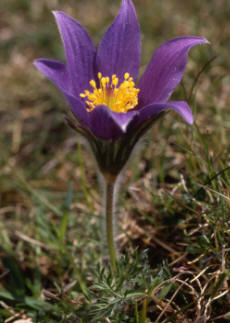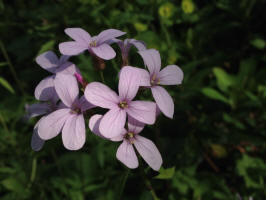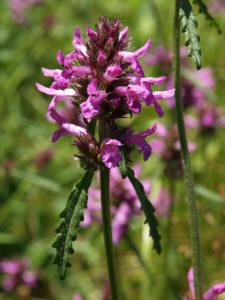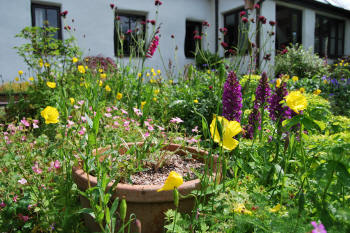Creating a wildflower garden

Want to grow your own shady characters and cornfield jewels? We’ll show you how, says Plantlife’s Botanical Specialist, Trevor Dines

One of the greatest pleasures in gardening is trying to decide what to grow – there are, after all, over 75,000 plants available. In the face of this global cornucopia, you might imagine that our own native flora would get shouldered aside. On the contrary, native flowers can take centre stage in the garden. In fact, our stunning flora can be woven into the tapestry of all garden styles, from informal cottage to stylish and contemporary.
Nearly 300 of our wild flowers can be considered to be ‘garden worthy’. By that I mean they are attractive, easy to grow, well behaved and readily available. While my own judgement might be somewhat subjective – I love tall bog-sedge (Carex magellanica) in my garden, but appreciate it might not be to everyone’s taste – the Royal Horticultural Society (RHS) have bestowed their highest accolade, an Award of Garden Merit, on 257 cultivars of native plants. This includes 20 cultivars of heather and seven of bloody crane’s-bill (Geranium sanguineum), representing 94 species in all.

Looks familar?
Some of these ‘garden worthy’ flowers will be very familiar – plants such as pasqueflower (Pulsatilla vulgaris) and columbine (Aquilegia vulgaris) are firm favourites needing little introduction. Others, such as bastard balm (Melittis melissophyllum) and coralroot (Cardamine bulbifera), deserve a much wider audience.

Especially interesting are some really common garden plants – things like shrubby cinquefoil (Potentilla fruticosa) and Jacob’s-ladder (Polemonium caeruleum) – that are sold for a few pounds in nearly every garden centre in the country, but which many don’t realise are very rare native flowers.
Plantlife’s Wildflower Garden website (http://plantlife.love-wildflowers.org.uk/wildflower_garden/) celebrates these wild flowers and helps you make the most of growing them in your own garden. We’ll give advice on cultivation, help you select the best ones to suit your conditions, and bring you regular features, ideas and suggestions on how to make the most of wild flowers in your garden throughout the year.

Sow and donate
We’ve also teamed up with John Chambers Wildflower Seed, the largest independent supplier of wild flower seeds in the UK, to bring you a special Plantlife range of flowers and mixtures suitable for every garden situation imaginable. All sorts of wild flowers are available, from betony (Stachys officinalis) to yellow iris (Iris pseudacorus), and an innovative range of seed mixtures, including 'shady characters’ and ‘cornfield jewels’. A donation is made to Plantlife for each purchase.
The seeds are available to buy from the Plantlife shop at http://shop.plantlife.org.uk/collections/wildflower-seeds
#PledgeAPlant
Gardeners have a real generosity of spirit. For many of us, the plants we grow have come from family and friends – a cutting, some seed or a bit of root given for free. Over time, these plants become connections to memories of people, places and events that shape our lives. In my own garden, the everlasting pea (Lathyrus grandiflorus) was given to me by my late grandfather, the honeysuckle (Lonicera periclymenum) is a cutting from my mother’s plant, which in turn came from Uncle Bill in Suffolk (he apparently found it in a local hedgerow).Some of the things that we cherish the most, including plants, plant names and plant folklore, are passed down through the generations. We want to encourage this giving of plants and celebrate the heritage of our wild flowers in gardens.

#PledgeAPlant is a commitment to give a cutting, division or seed of a plant from your own garden to someone else. It may be a niece, mother, son or friend, anyone that you think will love receiving a plant from you.
You could pledge to give...
Some seed, such as Welsh poppy (Meconopsis cambrica), foxglove (Digitalis purpurea) or columbine (Aquilegia vulgaris), in a little hand-made packet. A division of your favourite perennial, maybe water avens (Geumrivale), celandine (Ranunculus ficaria) or chamomile (Chamaemelum nobile). Some bulbs of snake’s-head fritillary (Fritillaria meleagris), bluebell (Hyacinthoides non-scripta) or ramsons (Allium ursinum) in an attractive pot. Tell us on Twitter and Instagram what plant you’re giving from your garden and why. If you want to include a photo that would be great - just make sure you tag your post with #PledgeAPlant.
For more information, visit http://plantlife.love-wildflowers.org.uk/wildflower_garden/pledge_a_plant/
You’ll be taking part in a wonderful tradition of sharing our botanical heritage, building memories and making connections.
Reader offer: Join Plantlife
As part of the partnership, Plantlife is offering a 50% to any CJS reader who would like to join Plantlife for the first time. Visit http://shop.plantlife.org.uk/collections/membership and choose Individual, Joint or Family membership. When you reach the checkout, just enter the discount code CJS.